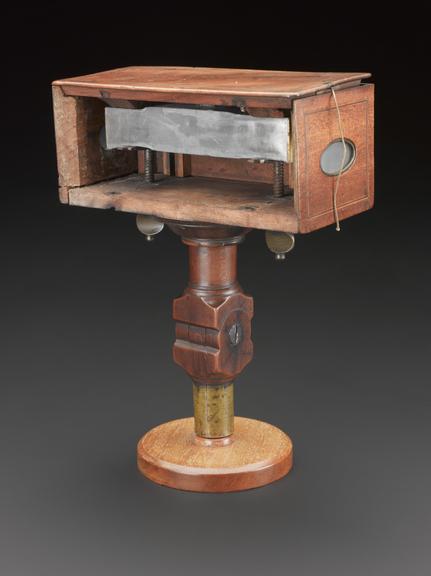Optical balance level
1700-1799







Optical balance level, after a type used in the 17th Century, with removable mahogany side panel, British, 1700-1799
Levelling is the method used by surveyors to determine the relative heights of different points on the earth's surface, but originally referred to the simple procedure of determining the horizontal. This crude instrument has a lead tube hanging from a fixed thread inside a protective case, with a slit at one end and a cross-hair at the other. The device would have been so easily disturbed that its use would have been extremely limited.
The surveyors of Ancient Egypt used plumb-bob levels in the form of a capital A, the plumb-line hanging from the apex and coinciding with a vertical mark or groove on the cross-piece when the instrument rested on a horizontal surface.
Both Hero of Alexandria and Vitruvius described water levels by means of which a horizontal direction was determined with reference to the surface of still water. There was little real advance on these methods until 1666 when the spirit level was invented by Thevenot.
This object is an example of the type of instrument used for rough levelling immediately prior to the introduction of the spirit level. It consists of a lead tube of rectangular cross-section freely suspended by a thread attached to the top of a wooden case. The tube has a horizontal slit at one end, with a corresponding cross wire at the other end. Glass windows fitted to the ends of the case permit a clear view along the sights. In practice, the tube was very sensitive to disturbances and its usefulness was further diminished by there being no satisfactory way of adjusting the line of sight to be truly horizontal.






